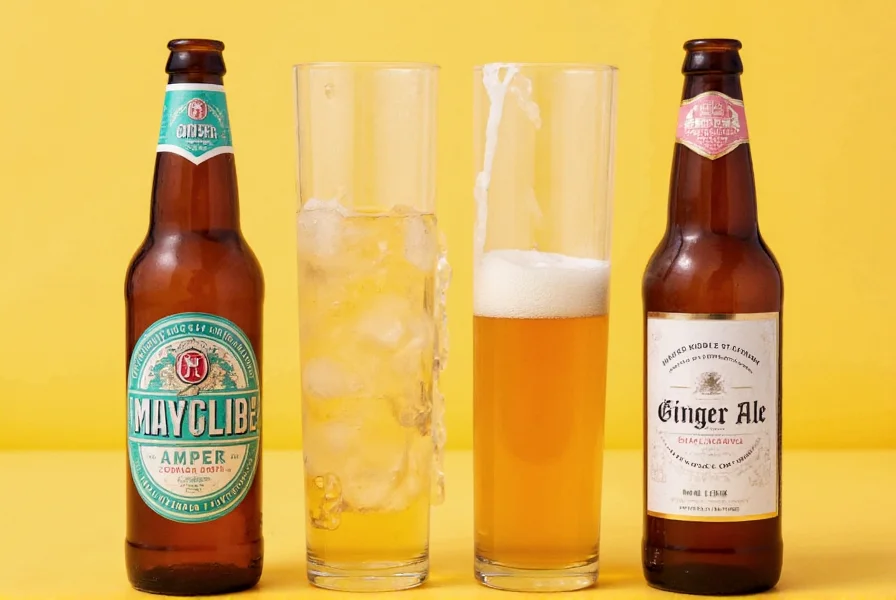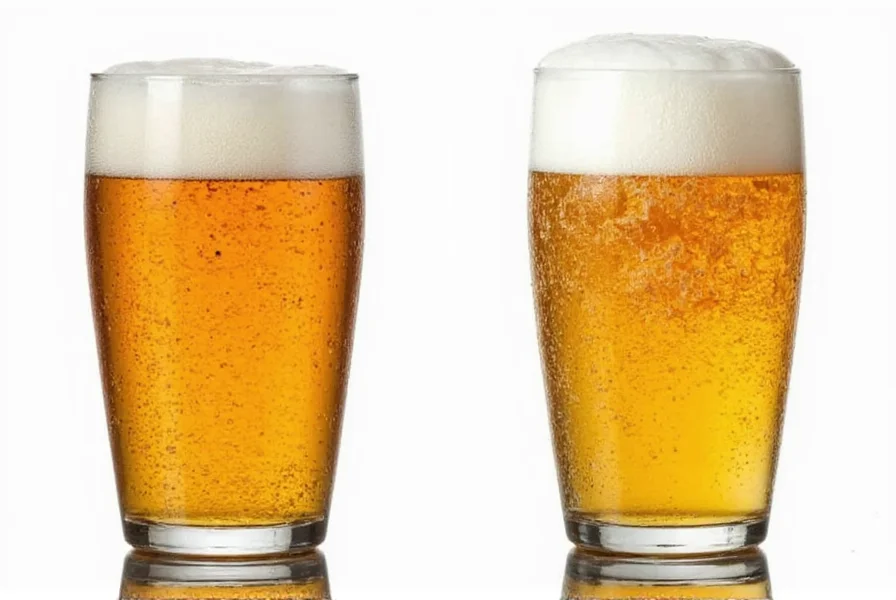Many people confuse ginger beer and ginger ale, treating them as interchangeable mixers for cocktails like Moscow Mules. However, these beverages have distinct histories, production processes, and flavor profiles that significantly impact how they perform in drinks and as standalone beverages. Understanding these differences helps consumers make informed choices based on taste preferences, dietary needs, and intended use.
What Exactly Is Ginger Beer?
Ginger beer originated in 18th century England as an alcoholic beverage created through natural fermentation. Traditional ginger beer uses a "ginger beer plant" (a symbiotic culture of yeast and bacteria) to ferment a mixture of ginger, sugar, water, and sometimes lemon. This fermentation process typically produces a beverage with up to 0.5% alcohol content, though historical versions could reach 11% ABV.
Modern craft ginger beers often maintain this fermentation approach, resulting in a complex, spicy, and sometimes cloudy beverage with natural carbonation. The fermentation process creates nuanced flavors that evolve as the drink sits, with notes of citrus, earthiness, and varying heat levels depending on the ginger variety used.

The Evolution of Ginger Ale
Ginger ale emerged later in the 19th century as a non-alcoholic alternative to ginger beer. Canadian John McLaughlin developed the golden-style ginger ale in 1904, creating a clearer, milder beverage by simply mixing ginger extract with carbonated water and sweeteners. Unlike ginger beer, ginger ale contains no fermentation process—just artificial carbonation.
Today's commercial ginger ales fall into two categories: golden (darker, spicier) and dry/clear (paler, milder). The dry style dominates the American market, offering a subtle ginger flavor that serves as a neutral mixer. Most major brands like Canada Dry and Seagram's produce this milder variety, which contains no alcohol and has a more consistent, predictable flavor profile.
Production Process Comparison
The fundamental difference between these beverages lies in their manufacturing:
| Characteristic | Ginger Beer | Ginger Ale |
|---|---|---|
| Production Method | Natural fermentation with yeast | Carbonated water with ginger flavoring |
| Alcohol Content | Typically 0.5% or less (non-alcoholic), though some craft versions may be higher | 0% (completely non-alcoholic) |
| Carbonation | Naturally occurring from fermentation | Artificially injected CO2 |
| Flavor Profile | Bolder, spicier, more complex with natural variations | Milder, sweeter, more consistent |
| Appearance | Often cloudy with sediment | Clear and bright |
Flavor Differences That Matter
When comparing ginger beer versus ginger ale taste profiles, the difference is substantial. Authentic ginger beer delivers a pronounced ginger "bite" with noticeable heat that lingers on the palate. This intensity comes from actual ginger root and the enzymatic changes during fermentation. The complexity often includes citrus notes, earthiness, and varying levels of sweetness depending on residual sugars.
Ginger ale, by contrast, offers a much milder experience. Most commercial versions use ginger extract rather than fresh ginger, resulting in a one-dimensional flavor that's primarily sweet with just a hint of ginger. This makes ginger ale function more as a neutral mixer that won't overpower other ingredients in cocktails.
Nutritional Comparison
Both beverages contain significant sugar, but their nutritional profiles differ due to production methods:
| Nutrient (per 12oz) | Ginger Beer | Ginger Ale |
|---|---|---|
| Calories | 120-180 | 130-150 |
| Sugar Content | 25-45g (varies with fermentation) | 30-40g (more consistent) |
| Probiotics | Present in traditionally fermented versions | Absent |
| Ginger Content | Higher concentration of actual ginger | Lower concentration, often artificial flavoring |
Traditional ginger beer may offer potential digestive benefits from both the ginger content and probiotics created during fermentation. However, most commercial ginger beers have been pasteurized, eliminating these probiotics while preserving flavor.
Practical Uses in Mixology and Beyond
The difference between ginger beer and ginger ale becomes crucial when mixing cocktails. Ginger beer's robust flavor stands up to strong spirits like vodka and dark rum, making it ideal for Moscow Mules and Dark 'n' Stormys. Its intensity won't get lost among other ingredients.
Ginger ale's milder profile works better with delicate spirits or when you want the ginger flavor to play a supporting rather than starring role. It's the preferred choice for reviving someone with an upset stomach, though traditional fermented ginger beer may offer more digestive benefits due to its higher ginger content.
How to Identify Authentic Products
When shopping for genuine ginger beverages, check the ingredient list carefully. Authentic ginger beer will list ginger root, sugar, water, and possibly lemon or other natural flavorings—but won't include artificial flavors or colors. Some craft versions may mention "naturally fermented" on the label.
Ginger ale typically contains carbonated water, high fructose corn syrup, ginger flavor, and citric acid. The presence of "natural flavors" rather than actual ginger root is a telltale sign of commercial ginger ale.

Choosing Between Ginger Beer and Ginger Ale
Select ginger beer when you want:
- A bolder ginger flavor in cocktails
- Traditional fermentation benefits
- A more complex, spicy profile
- Authentic Moscow Mule experience
Select ginger ale when you need:
- A mild mixer that won't overpower other ingredients
- A consistent, predictable flavor
- A remedy for nausea (though less potent than real ginger)
- A universally appealing soft drink
Common Misconceptions Clarified
Many believe all ginger beers contain significant alcohol, but most commercial versions sold in grocery stores contain less than 0.5% ABV—classified as non-alcoholic. The historical connection to stronger fermented versions causes this confusion.
Another misconception is that ginger ale contains more ginger. In reality, traditional ginger beer typically uses more actual ginger root, while many ginger ales rely on ginger extract or artificial flavoring to achieve their milder profile.










 浙公网安备
33010002000092号
浙公网安备
33010002000092号 浙B2-20120091-4
浙B2-20120091-4